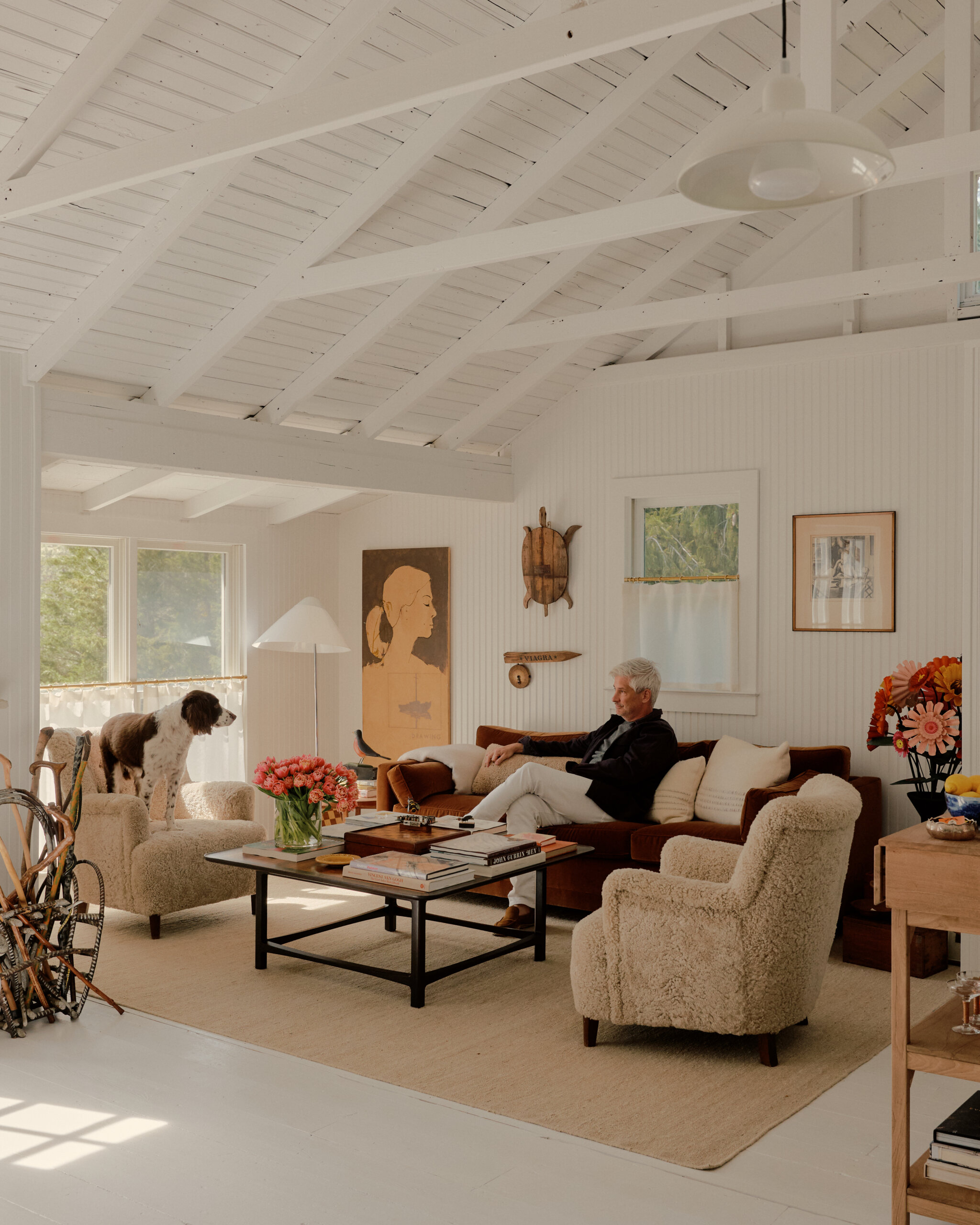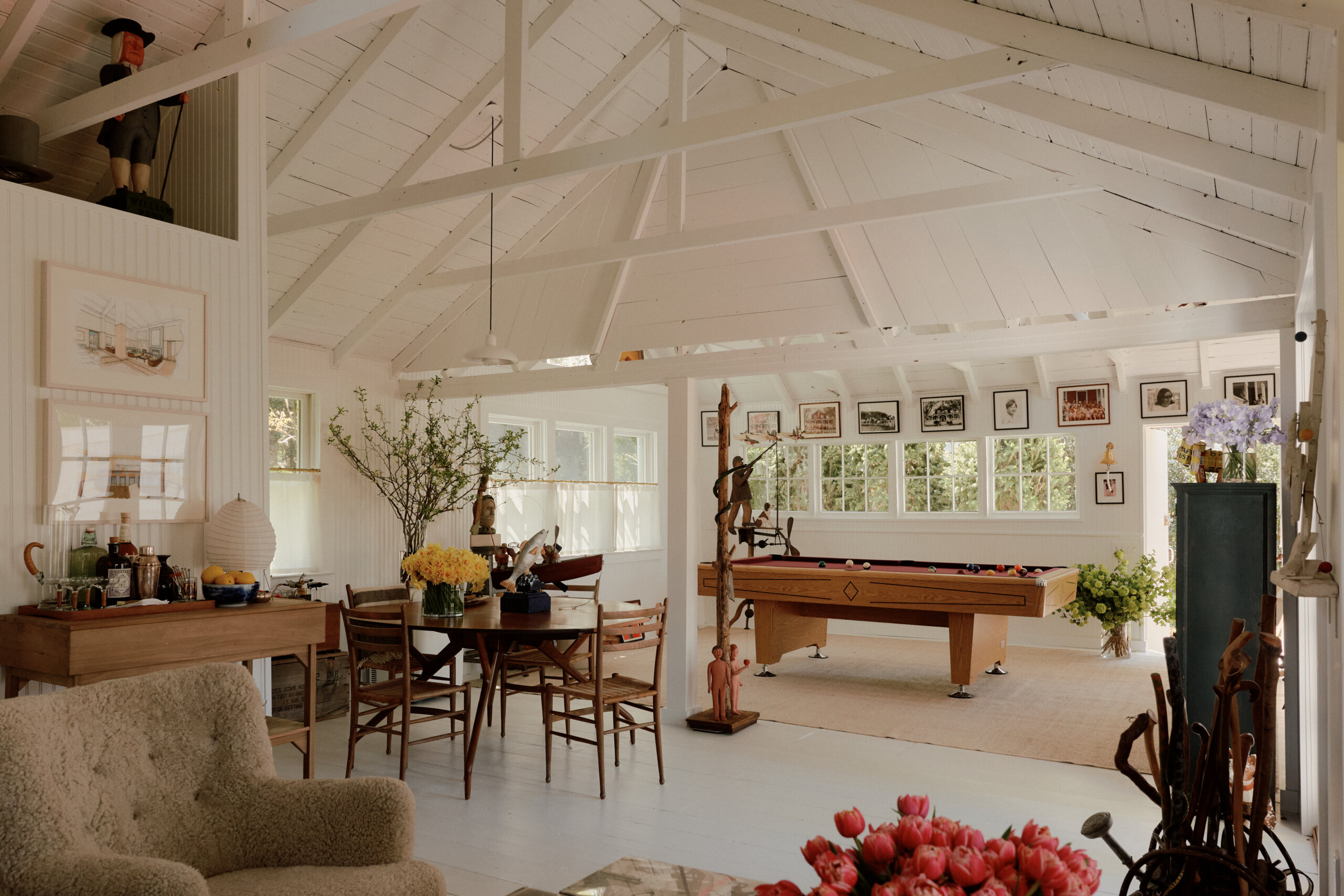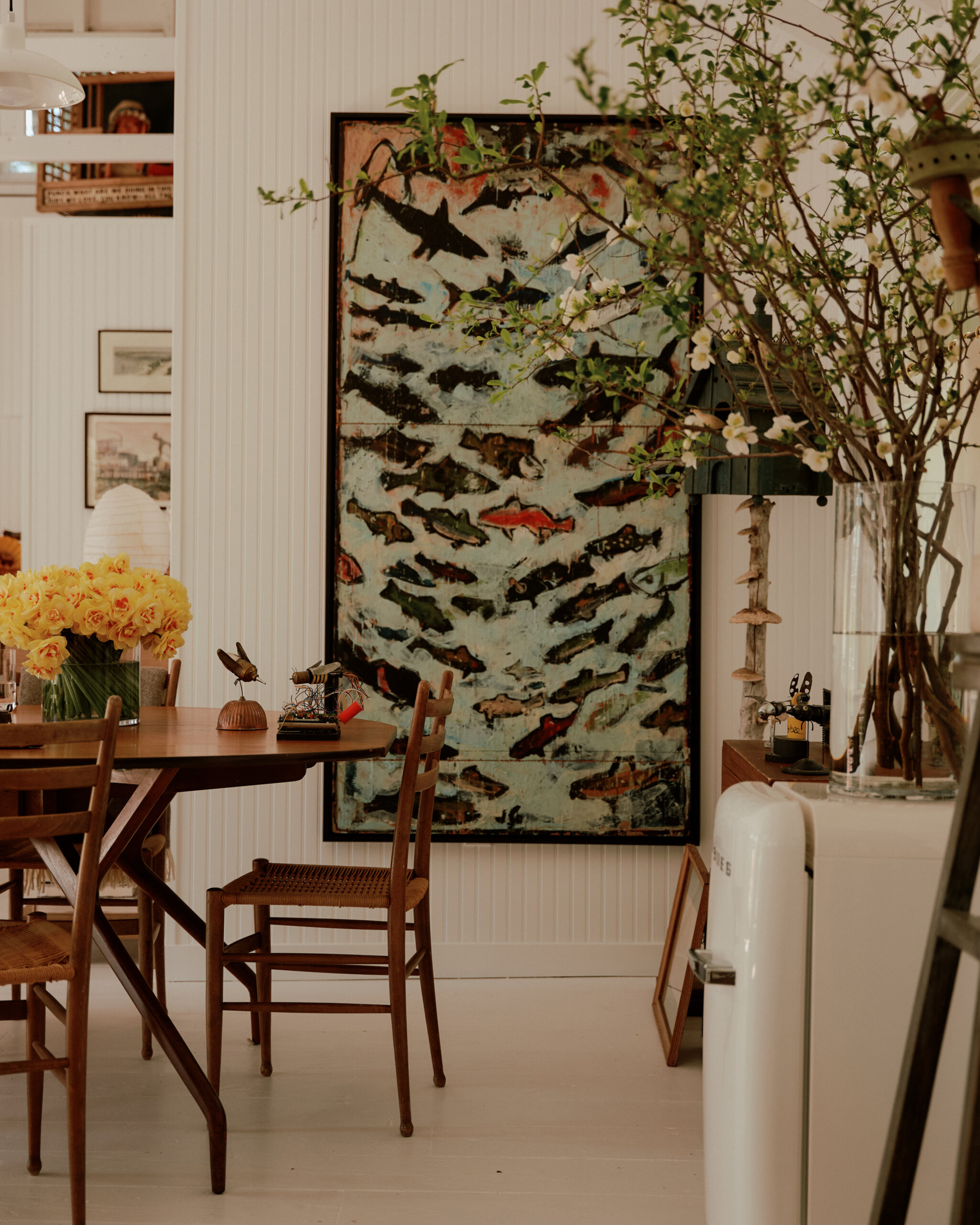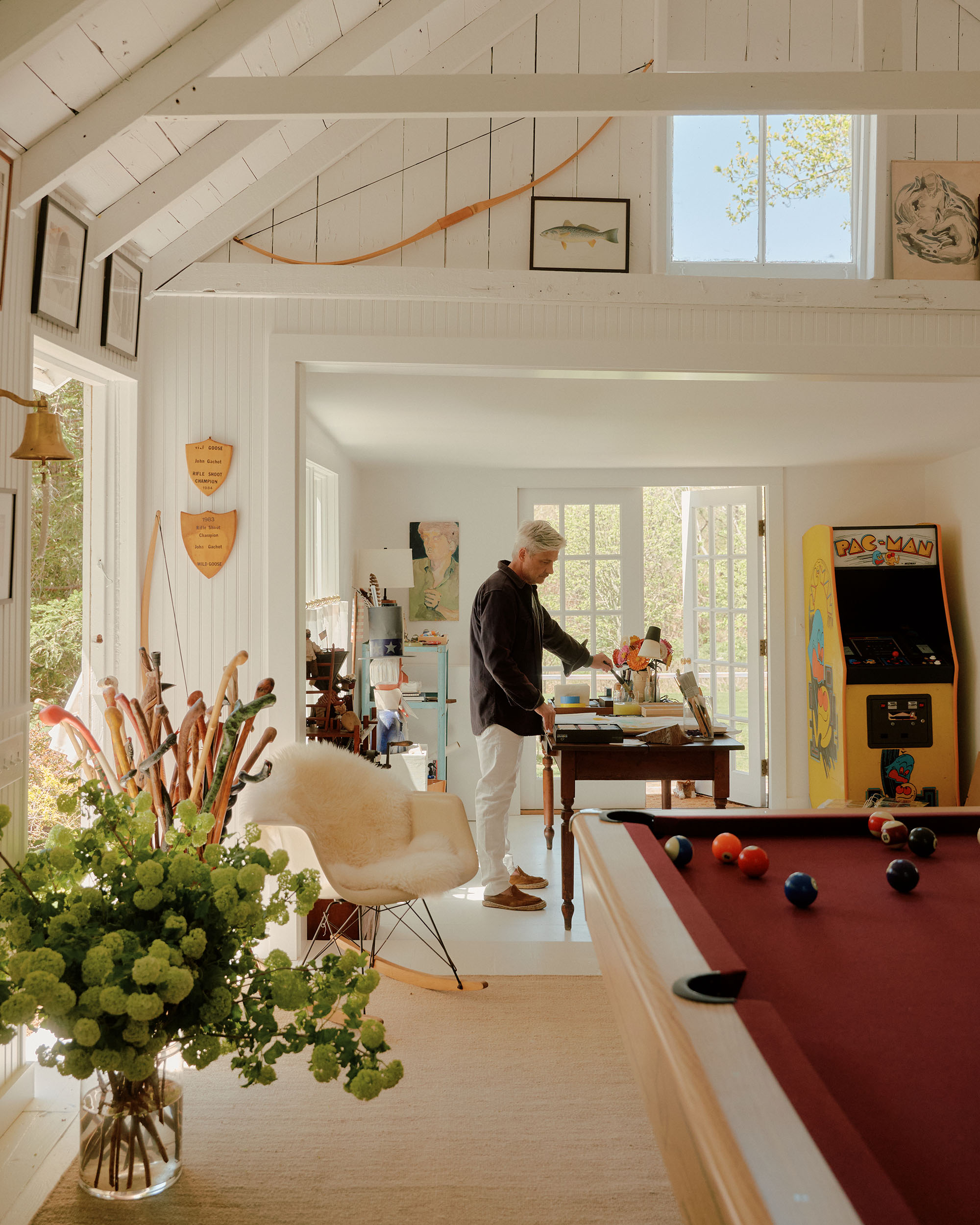
Growing up, every visit to my grandparents culminated in a visit to the ice house.
Richard and Irene Gachot lived on a sprawling property abutting an even more sprawling property in Long Island’s Nassau County. Its gravel driveway, antique-filled farmhouse, and thick woodlands had been a labyrinthine playground for their five boys in the ’60s and ’70s, and became one for me three decades later. The ice house stood sentinel over this insular fantasy land—this was where my grandfather went about the business of being an artist.
Wildly prolific, Dick made work with the vengeance of someone who had, legend has it, been forced to trade his dreams of more creative pursuits for the life of a Mad Man after his father lost a backgammon bet. The sculptures he produced (many of them animated with the turn of a handle) were loud commentaries on societal ills, anarchic riffs on inside jokes, or R-rated puns that went way over my head as a kid. They were cranky, weirdly brilliant, and hard to live with, just like him.
If the ice house was his inner sanctum, Shelter Island was my grandfather’s eternal muse. He and Irene rented a house there every summer, and the anti-Hamptons hamlet’s beach detritus, town dump, and motley cast of characters were an unending font of material for him. Dick died seven years ago, but just over a mile from their estival refuge my uncle John found a space where his art could roam.
Away from the churn of Manhattan, where he runs an eponymous design studio with his wife Christine, he made his way back into a drawing and painting practice that had been for decades relegated to notebooks and bar napkins. In a shed on their Dering Harbor property, John’s easels, drawing sheets, and pastels coexist with a gaggle of Dick’s sculptures, engrossed in a never-ending dialogue. As the summer kicked off, I checked in with my uncle for his side of the story and a tour of his happy place.

CULTURED: Tell me where your story with the shed begins.
John Gachot: Christine and I had a little shotgun shack on Shelter Island, which barely had two bedrooms. Our boys were getting bigger and we were just on top of each other, so we knew we had to move. Fast forward to February 2017. There had been a house we were looking at, and the broker called to say it was available. There was this teeny little house out in the back, and I just assumed it was someone else’s property. We came back to buy the house, and they were like, “Do you wanna go check out the shed in the back?” I was like, “Wait, that’s a part of this?” I immediately claimed it and said, “This is gonna be where I finally expand beyond working in a notebook.”
CULTURED: Did you immediately make the link to your father’s ice house? Can you tell me what that space meant to you as a kid, and how you see its function as an adult?
Gachot: Old Westbury—the house, the property, the Gardens, and all the little buildings on it—were magical in a lot of ways. And I think they were inspirational to me unconsciously for becoming a designer, not just an artist. The ice house was one of those places—it was always this mysterious building. It was a mid-19th-century structure that he re-clad with all the interiors fully intact. It was his little arena, and it very much became a museum—the Richard Gachot museum. You’d go in and there was a little notebook where you’d sign in… The analogy ends there. With the shed, it was really about having a working studio, somewhere where the clutter of my life could gather—old and new paintings and drawings, parts of chairs, control samples started piling up. That’s what gave it its own life to me.

CULTURED: Artists have such different relationships to who they let inside their studios, and when. Who do you let inside the space, and what’s your relationship to showing work that’s in progress?
Gachot: I started my adult life determined to be an artist. Then I came to New York, understood the realities of life, and found myself doing less and less art—not so much because of the need to work to survive, but because of how intimidated and out of place I felt in the art world at the time. I had a job at Artforum, but I didn’t think the art world had anything to do with my art. I definitely didn’t want to share my artwork at that point. It took me a while to realize, I don’t really care if people see this. I’m not there to impress someone—I just want to make something.
Part of that stems from the place you go to when you make art. For me, it’s one of the few times I don’t think. Every morning, I get up and I draw while everyone’s asleep. And in the shed, I leave drawings out. I could care less if the boys are flipping through things. I’ve found beer cans left out on drawings, and I honestly don’t mind because it takes the preciousness out of it. There’s a living quality to it.
CULTURED: When did you first think of yourself as an artist?
Gachot: Look, there was a part of my life where I was convinced I was gonna be the next [John Singer] Sargent. I don’t even know when it started, but I was a very visual kid. I had a very conservative education growing up. It always felt weird being the one kid who did really well in art class. Other people came in and killed time gossiping and flirting. I was like, This is my favorite part of the day.
And during summers on Shelter Island growing up, we used to have this art show every year. The parents would “judge” the art, although I don’t know if anyone was ever not let in. There was a lot of joking and humor to it, but everybody submitted something. I took incredible pride in it; I was always hoping I would get an award.

CULTURED: You’ve worked as a designer for almost three decades. Do you feel like these practices have fed each other?
Gachot: In college I was also really interested in furniture design. When I moved to New York, I had the teeniest apartments with no furniture, so I started cobbling together little things that allowed me to live in a civilized way. I would build a little shelf out of a scrap I found in the street and mount it to the wall next to my bed, and that would get a clip-on light. It’s a completely different process than decoration: It was really about function and need. And that’s still where I start when I design something today. My art found another format over the years, largely due to the space constraints. So, watercolor and gouache in notebooks or on sheets of paper, drawing and designing furniture.
I became an applied artist. You look at Finn Juhl or Chippendale, and you realize these guys were conveying information in the most beautiful way. But also you’re in a service business as a designer—people are coming to you with a problem to solve.
CULTURED: But you never gave up on art completely.
Gachot: I knew that one day, hopefully, if things worked out, my work life would allow me to do more art. Slowly but surely, that’s where we are. [Christine and I] talk about gathering a body of work that I can show, but I’m not worried about that. Maybe I’ll be 80 by the time I’m ready, but in the meantime I can still keep making it.










 in your life?
in your life?

